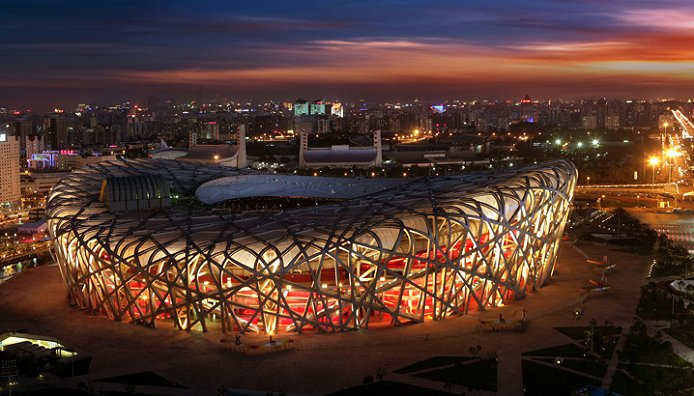For Rogier van der Heide, lighting does not simply act as illumination. It is an art form. It can transform the ambiance of a room or a building at the touch of a button and it is essential when creating the right environment for every occasion.
Within the superyacht community, this creation of ambiance is essential. This is a luxurious environment and whether an owner and their guests wish to party, to watch a movie, to host dinner or simply to relax, the atmosphere is created using clever lighting.
Van der Heide has been in the business of creating beautifully lit environments for 30 years. From humble beginning as a lighting designer, he has become one of the world’s foremost experts on illumination and has worked on some prestigious projects such as the illumination of the Birds Nest stadium for the Beijing Olympics or the famous YAS Viceroy Hotel at the Marina of Abu Dhabi.
“Lighting is an essential part of any superyacht, yet it has been previously overlooked,” explains van der Heide. “This is especially true in the design phase when important decisions are made about the systems on the yacht.” This, however, is changing as the superyacht world gradually wakes up to the importance of effective lighting on board. The emergence of the Internet of Things and the ‘connected yacht’ which links systems together, is transforming the way lighting is used onboard.
Today, lighting is not simply about illumination. It is about connectivity. In our IoT era, lighting is playing a major role in building management, sending and receiving commands about space occupation and other important information. Van der Heide sees this as the next step for the yachting industry, which has somewhat lagged behind in terms of advancement.
It’s all about integration, with specially designed components that allow any light fitting to be controlled via a small device that is installed behind a wall or ceiling panel and which is part of a wider control system. Using apps on mobile devices, users can gain control over their experience with film, music, climate, shades, and now also light. This convergence into one, single control system enhances the overall guest experience, simplifying the overall control of the systems onboard the yacht. There is, however, work to be done in terms of this integrated approach. “We have noted that the control systems onboard many yachts do not tend to be up-to-date,” explains van der Heide. “They use different protocols that are all operated from panels and screens. One of the things we do with lighting design is to create one single app to control everything.”
But it’s not just the yacht interior that benefits from lighting, as van der Heide’s experience shows from the many buildings he has illuminated. “When we look at how to bring out the best with light inside, we also look at how to do the same thing outside, when the boat is in the marina,” says van der Heide. “We do all the things that we’re supposed to do such as looking into energy saving but we also have good, creative ideas about what we can do with light. Lights can be introduced into the boat in a very non-intrusive way so when the lights are not on, you don’t see them at all.”
Van der Heide also sees lighting becoming much more subtle onboard superyachts. It will converge with entertainment to become one experience and using different colours the mood of a space will be altered, expanding a movie from the screen to the entire room, for example.
“The use of colour will become more subtle,” continues van der Heide. “When we look at a lot of current lighting examples, the colour is very saturated like magenta or deep blue. I think we will see an aesthetic trend that will be much more towards the subtle use of colour which also is less showy and obtrusive.”
The other important change that van der Heide predicts is the inclusion of lighting in the design phase of the yacht. Through better collaboration, between lighting designers and naval architects, lighting will be integrated from the start, and not overlooked as it has been in the past. “I expect earlier collaboration to create a beautiful, integrated visual image of the boat whether it is at sea or moored somewhere,” he says. “I also think it will become easier to place light behind panels or other elements of the boat and install it so it stays there for good. This dialogue is not really happening at the moment and lighting designers tend to get involved late on in projects. When it is considered well in advance, great results can be achieved.”
Lighting is enabling superyacht owners to make the very best of their space. Through intelligent use of light, even smaller superyachts of up to 30 metres can transform the limited space available, changing the look and feel of rooms for different purposes.
Rogier van der Heide will continue to push the boundaries in terms of what light can achieve in this growing discipline in yacht design.




